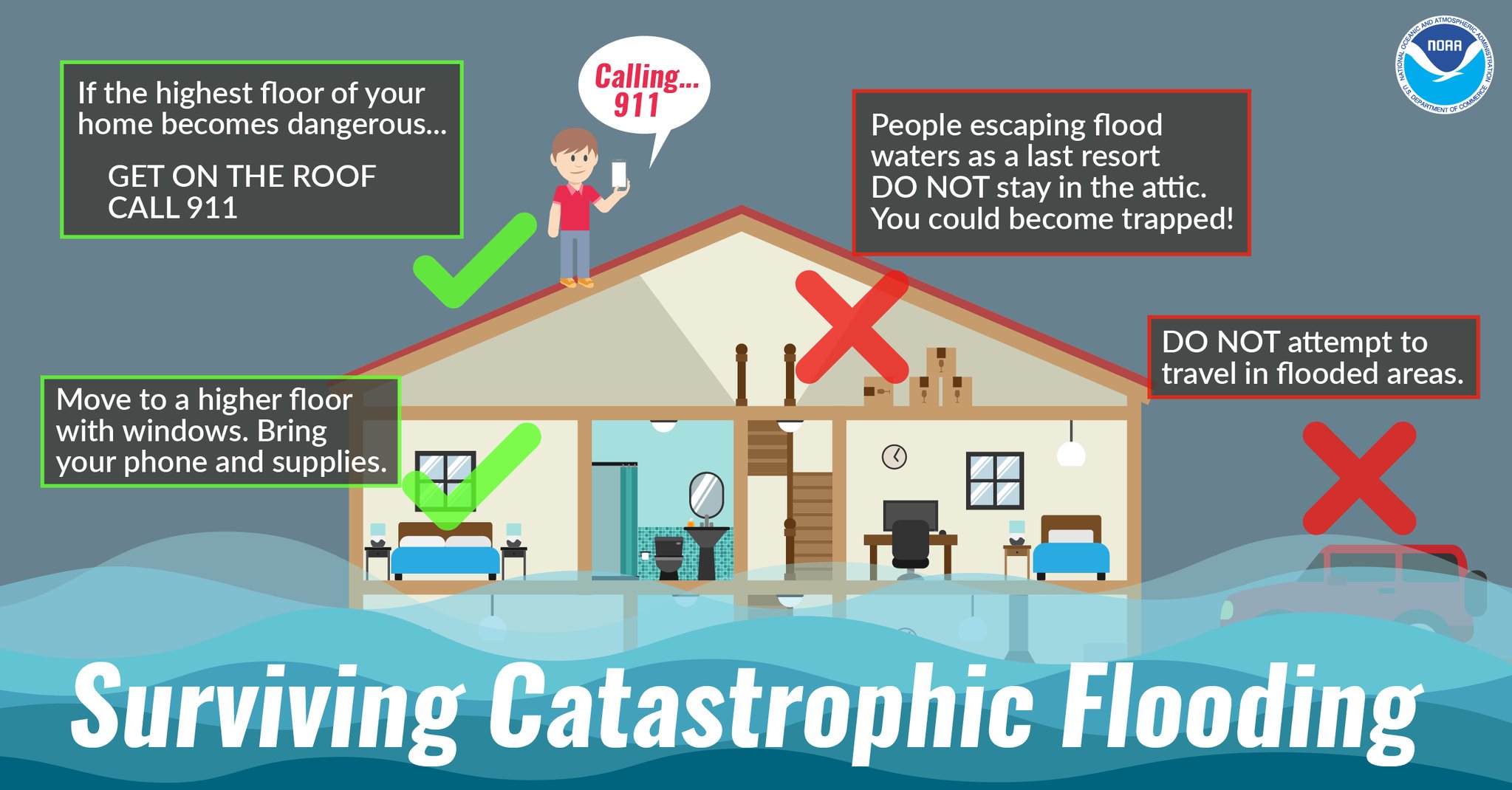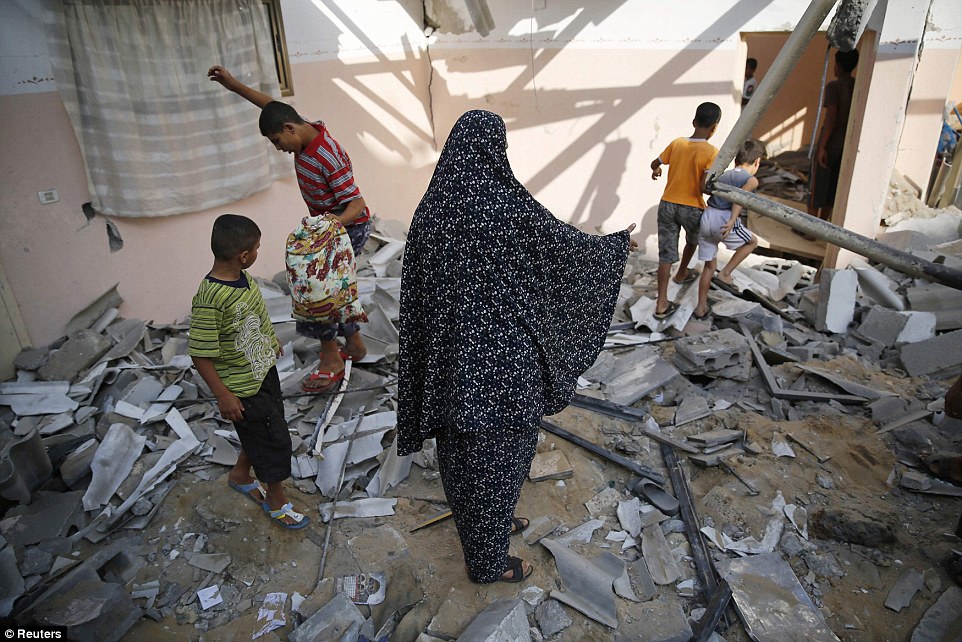Responding To A Flash Flood Emergency: Survival Strategies And Actions

Table of Contents
Preparing for a Flash Flood Emergency: Proactive Steps for Safety
Proactive preparation is key to surviving a flash flood. Understanding your risk and having a comprehensive plan in place can significantly improve your chances of safety.
Understanding Your Risk: Knowing Your Vulnerability
Knowing your area's flood risk is the first step in preparing for a flash flood emergency. High-risk areas are typically those near rivers, streams, canyons, and low-lying areas.
- Subscribe to emergency alerts: Sign up for text and email alerts from your local authorities and the National Weather Service. These alerts provide crucial real-time information during severe weather events.
- Identify escape routes: Plan multiple escape routes from your home and neighborhood, considering potential road closures and flooding. Know where higher ground is located.
- Create a family emergency plan: Develop a detailed plan that includes designated meeting points, communication strategies (consider a family communication app), and emergency contact information. This plan should be practiced regularly with all family members.
Building Your Emergency Kit: Essential Supplies for Flash Floods
A well-stocked emergency kit is vital during a flash flood emergency. This kit should be easily accessible and include essential supplies to help you survive for several days.
- Water and food: Stockpile at least one gallon of water per person per day for several days, and non-perishable food items like canned goods, energy bars, and dried fruits.
- First-aid kit and medications: Ensure you have a well-stocked first-aid kit, including any necessary prescription medications.
- Communication and light: Include a portable radio (hand-crank or battery-powered), flashlights, and extra batteries.
- Important documents: Store copies of important documents, such as insurance policies and identification, in waterproof containers.
- Other essentials: Pack extra clothing, blankets, and any other items specific to your family's needs, such as baby supplies or pet food. Consider sandbags for potential flood protection around your property if feasible.
Protecting Your Home: Minimizing Flood Damage
Taking steps to protect your home before a flash flood can significantly reduce the damage.
- Regular maintenance: Clean gutters and downspouts regularly to prevent water from accumulating and overflowing.
- Elevate valuables: Move valuable items and appliances to higher levels in your home.
- Flood protection: If feasible, consider installing flood barriers or backflow preventers to minimize the risk of water entering your home. This is particularly important for those in known high-risk zones.
Actions During a Flash Flood Emergency: Immediate Survival Tactics
During a flash flood, immediate action is crucial. Your safety is paramount.
Evacuate Immediately: Your Safety is Priority One
If you receive a flash flood warning, evacuate immediately. Don't wait for the floodwaters to arrive.
- Follow evacuation orders: Obey all instructions from local authorities and emergency personnel.
- Use designated routes: Use pre-planned evacuation routes and avoid flooded areas.
- Don't delay: Time is of the essence during a flash flood; prompt evacuation is vital.
Seeking Higher Ground: If Evacuation Isn't Possible
If evacuation isn't possible, move to the highest level of your building.
- Avoid lower levels: Stay away from basements and ground floors, as these are most susceptible to flooding.
- Move valuables: If possible, move valuable items to higher levels.
- Stay informed: Keep your radio on for updates and instructions from emergency services.
Safe Driving Practices: When Driving is Absolutely Necessary
If you must drive during a flash flood emergency, exercise extreme caution.
- Turn around, don't drown: Never drive through flooded areas; even a few inches of water can sweep your car away.
- Avoid hazards: Be alert for downed power lines, debris, and washed-out roads.
- Stay informed: Monitor weather reports and road closures regularly.
Post-Flash Flood Emergency: Recovery and Safety Measures
After the immediate danger has passed, the recovery process begins. This requires careful attention to safety.
Assessing the Damage: Careful Inspection is Key
Once the floodwaters recede, assess the damage to your property and belongings carefully.
- Inspect for safety: Avoid entering flood-damaged buildings until they have been inspected for structural damage and safety hazards.
- Document damage: Take photos and videos of the damage for insurance purposes.
- Report damage: Contact your local authorities to report the damage.
Cleaning Up Safely: Protecting Your Health
Cleaning up after a flash flood requires caution to prevent injury and illness.
- Protective gear: Wear protective clothing, including gloves, boots, and eye protection.
- Disinfection: Disinfect all affected areas thoroughly to prevent the spread of disease.
- Waste disposal: Dispose of damaged materials properly according to local guidelines.
Seeking Assistance: Utilizing Available Resources
Don't hesitate to seek assistance from local authorities, relief organizations, or insurance companies.
- Government assistance: Contact FEMA (Federal Emergency Management Agency) or other relevant agencies for assistance.
- Community support: Utilize available resources from the Red Cross or other community organizations.
- Insurance claims: File insurance claims promptly and follow the necessary procedures.
Conclusion
Responding effectively to a flash flood emergency requires preparedness, quick thinking, and a knowledge of safety procedures. By taking proactive steps before a flash flood, acting decisively during a flash flood event, and taking appropriate recovery measures afterward, you can significantly reduce the risks and improve your chances of survival. Remember, understanding your risk, creating an emergency plan, and knowing the correct actions to take during a flash flood emergency are vital for your safety. Stay informed about flash flood warnings and develop your own comprehensive flash flood emergency plan today.

Featured Posts
-
 The Striking Size Difference Between Toothless And Red Death A How To Train Your Dragon Analysis
May 26, 2025
The Striking Size Difference Between Toothless And Red Death A How To Train Your Dragon Analysis
May 26, 2025 -
 Governors Warning The Threat Of Fascism In A Post Trump World
May 26, 2025
Governors Warning The Threat Of Fascism In A Post Trump World
May 26, 2025 -
 Analyzing Michael Schumachers Relationships With Fellow Drivers
May 26, 2025
Analyzing Michael Schumachers Relationships With Fellow Drivers
May 26, 2025 -
 Tour Of Flanders 2024 Pogacar Wins Van Der Poel Second
May 26, 2025
Tour Of Flanders 2024 Pogacar Wins Van Der Poel Second
May 26, 2025 -
 Wounds Visible In Photo Of Kidnapped Israeli Soldier Matan Angrest
May 26, 2025
Wounds Visible In Photo Of Kidnapped Israeli Soldier Matan Angrest
May 26, 2025
Latest Posts
-
 Smartphone Samsung Galaxy S25 128 Go Avis Prix Et Bon Plan
May 28, 2025
Smartphone Samsung Galaxy S25 128 Go Avis Prix Et Bon Plan
May 28, 2025 -
 Smartphone Samsung Galaxy S25 512 Go Le Meilleur Prix Garanti
May 28, 2025
Smartphone Samsung Galaxy S25 512 Go Le Meilleur Prix Garanti
May 28, 2025 -
 Samsung Galaxy S25 128 Go Le Top Produit A 648 E Avis Et Comparatif
May 28, 2025
Samsung Galaxy S25 128 Go Le Top Produit A 648 E Avis Et Comparatif
May 28, 2025 -
 Bon Plan Samsung Galaxy S25 128 Go 5 Etoiles A 814 22 E
May 28, 2025
Bon Plan Samsung Galaxy S25 128 Go 5 Etoiles A 814 22 E
May 28, 2025 -
 Samsung Galaxy S25 256 Go Top Produit A 775 E Notre Analyse
May 28, 2025
Samsung Galaxy S25 256 Go Top Produit A 775 E Notre Analyse
May 28, 2025
